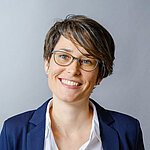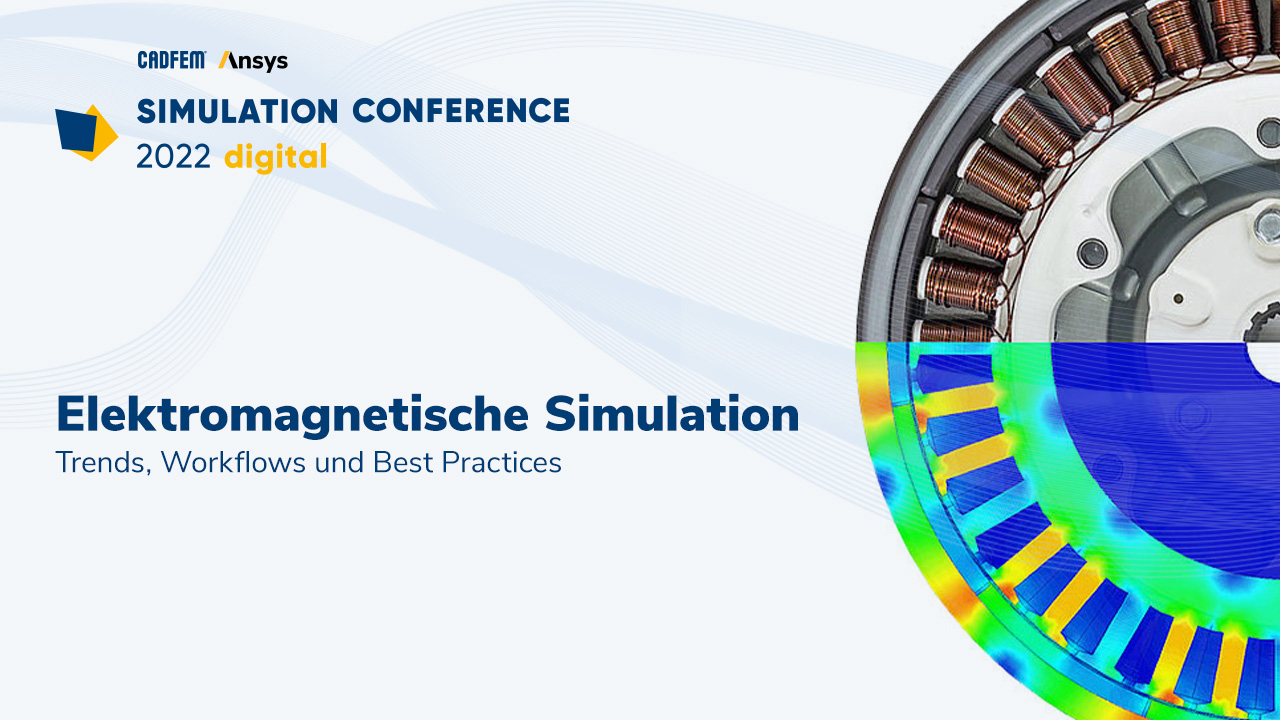A glimpse into the technology
System simulation as a driver of innovation
The development or monitoring of highly complex systems is unthinkable without digitalized engineering. The simulation models are huge, representing many different influences and interactions in detail. If the results have to be available very quickly (think of virtual sensors of a digital twin), even high-performance computing is not enough.
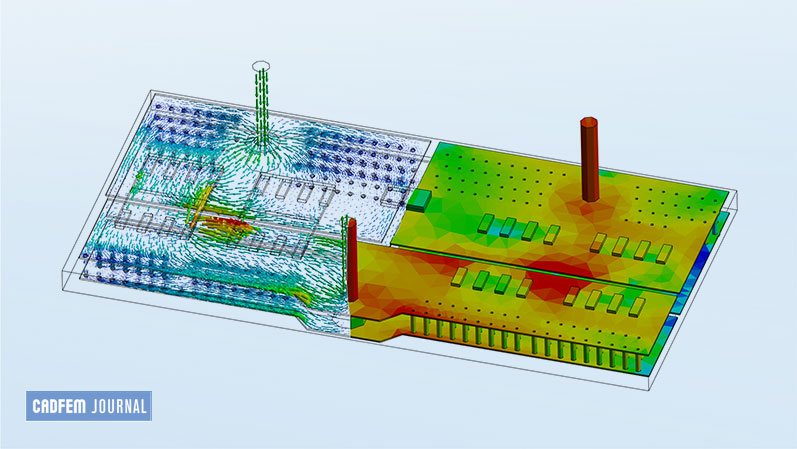
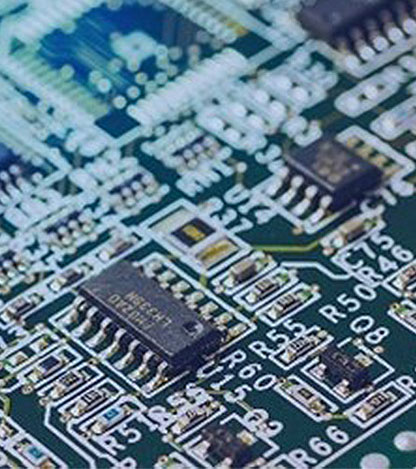
System simulations and model reduction strategies are the method of choice. This is achieved by a clever combination of various model types, reduction approaches, and CADFEM know-how. Three CADFEM projects show that this approach not only makes many things faster, but also makes some things possible in the first place.
Large travel distances in system simulation
Pick-and-place machines have the task of picking up components from a feeder and positioning them quickly and accurately somewhere else. To do this, a gripper unit moves quickly over a large travel distance relative to a portal.
In FE simulation, this moving load is modeled using nonlinear contacts along the guide rail, but the transient simulation of the entire process is not possible due to the large number of time steps. In order to observe the interaction of controller, drive, and mechanics, the obvious way is to use model order reduction (MOR) in the system simulation. The system dynamics of the machine is determined by the relative position of the gripper to the portal, which makes the usual approach of a modal reduction using remote points as connection points obsolete.
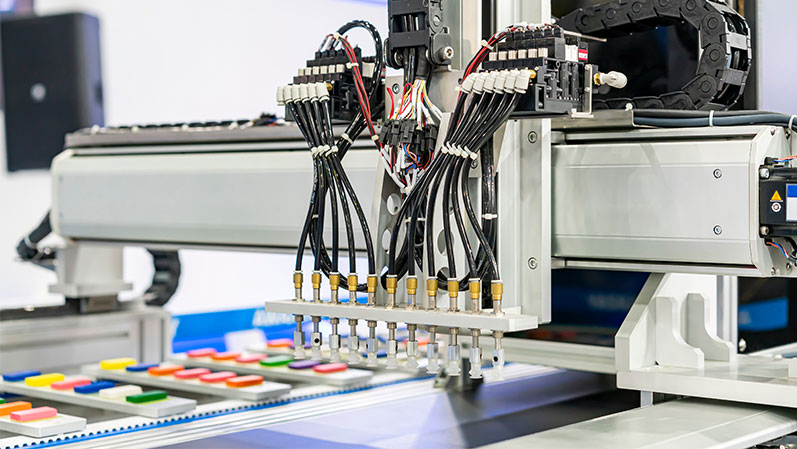
An intermediate step that has been introduced takes this into account. The deformation of the guide rail normal to the direction of motion is not represented by individual node displacements as in FE, but rather is projected onto a new basis, a set of unit displacements. Weighted with time-dependent coefficients, the displacement of each node on the surface can be described at any time over a small number of degrees of freedom.
The unit displacements applied as terminals for the ROM from Model Reduction inside Ansys (MORiA) allow a combination of the position-dependent deformation of the portal and the guide rail with their internal modes in one model. A translation is used for the connection of the movable gripper, which describes forces and associated displacements from physical coordinates of the gripper into the base system of the guide rail and back.
The resulting acceleration in the system simulation compared to an FE calculation amounts to a factor of approximately 1,000 and makes the detailed analysis and optimization of positioning processes possible in the first place.
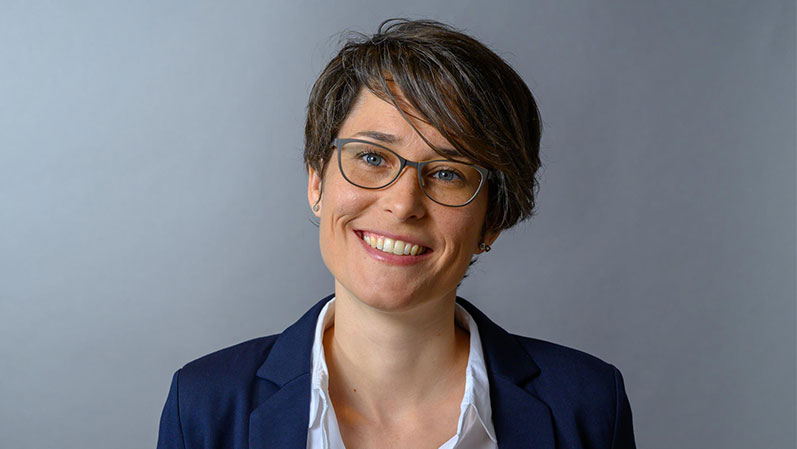
About the author
Dr.-Ing. Hanna Baumgartl has been supporting customers in the field of system simulation at CADFEM since 2014 and is involved in numerous projects. Hanna studied mechanical engineering at the Technical University of Ilmenau and did her doctorate on the topic of system simulation.
Power electronics – temperature-dependent losses in the package
Too many time steps can also be a pain point for the thermal-electrical simulation of power electronics, e.g., in half-bridges. With the advent of SiC technology, the focus of converted power loss shifts away from semiconductors to Joule heating of conductor paths and bus bars. The heating leads to a change in electrical conductivity, which in turn strongly influences the behavior of the circuit and its losses.
The very different time scales of these mutually influencing effects (nanoseconds vs. many seconds) prohibit coupled imaging in the FE model. Here, too, the path using the MOR helps. Due to the nonlinear nature of the coupling (the heat flux density is the square of the current density distribution), the reduction of both domains together is not possible. Again, the solution provides a new, suitably selected basis: namely the orthogonalized current density distributions from the circuitry. Each current mode is assigned a temperature-dependent resistor, and the converted powers find their way into a thermal ROM as load vectors.
The acceleration here is even more impressive. A factor of 30,000 provides a close look into the thermal-electrical interaction as an important source of locally resolved losses.
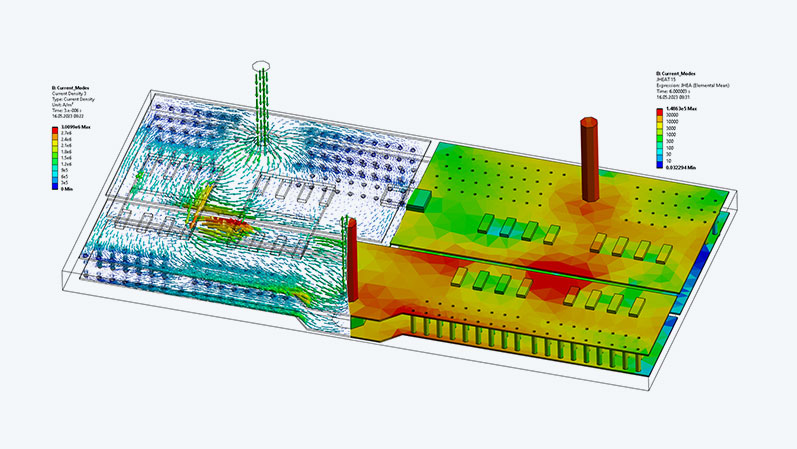
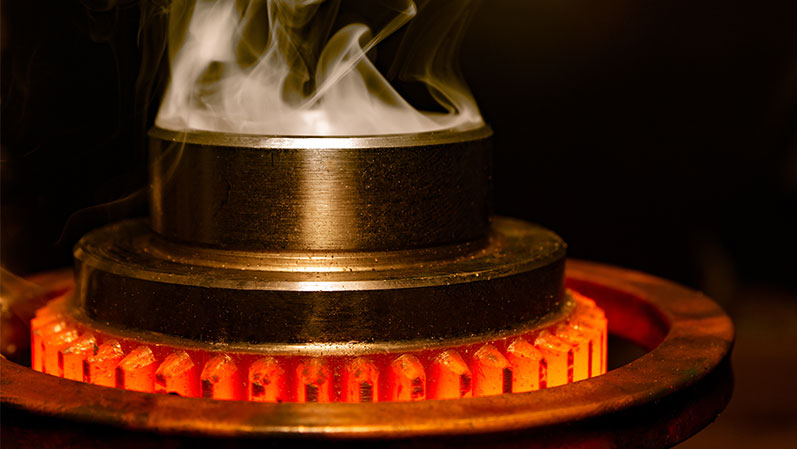
Induction hardening – Virtual temperature sensor
Virtual sensors provide valuable information for the online optimization of manufacturing processes such as induction hardening. The hardening result depends on many manufacturing and material parameters – the former can be controlled, but in combination with batch fluctuations of the materials, the instinct of the plant operator is currently an important technological influencing variable.
For improved process control (faster, fewer reworks), plant operators have a great interest in predicting the temperature distribution and the influence of the manufacturing parameters on it “live”. For the necessary MOR, a special path was also taken here. The electromagnetic effects are highly nonlinear, locally dependent on the temperature distribution and quasi-stationary. The temperature field is approximately linear, although time dependent. Using two sets of basis vectors (temperature distribution and heat generation rate), the spatially resolved coupling of two model types takes place in the system simulation via the coefficients of the bases.
The nonlinearity of the heat generation rate as a function of temperature is represented by MOP models from optiSLang. A state space model with heat generation load vectors provides the transient response of the temperature distribution and the combination of both models provide the necessary quick insight.

CADFEM Germany GmbH
Author: Dr.-Ing. Hanna Sophie Baumgartl
(CADFEM Germany GmbH)
Cover image: © CADFEM
Published: July, 2023
Contact CADFEM
